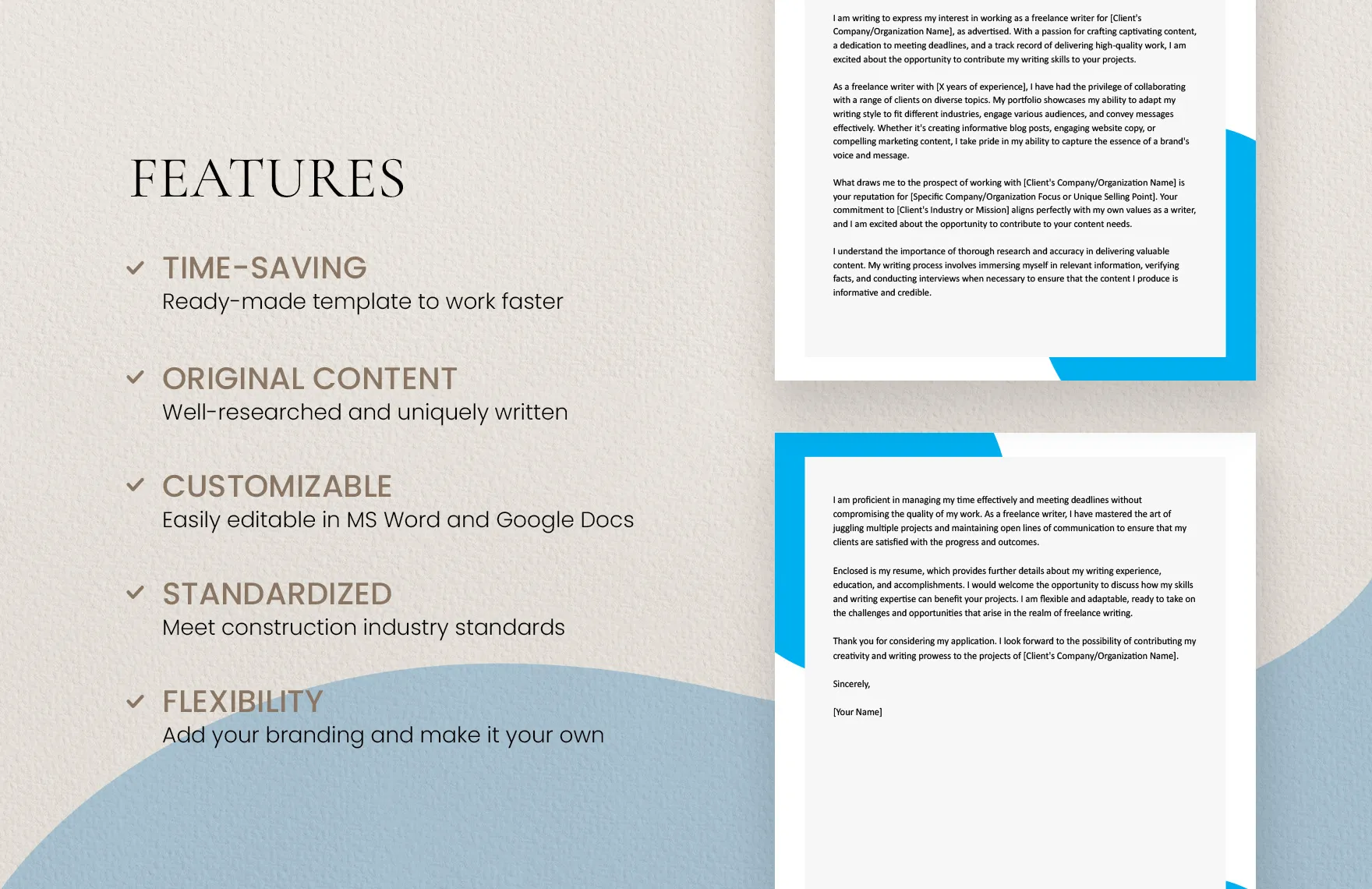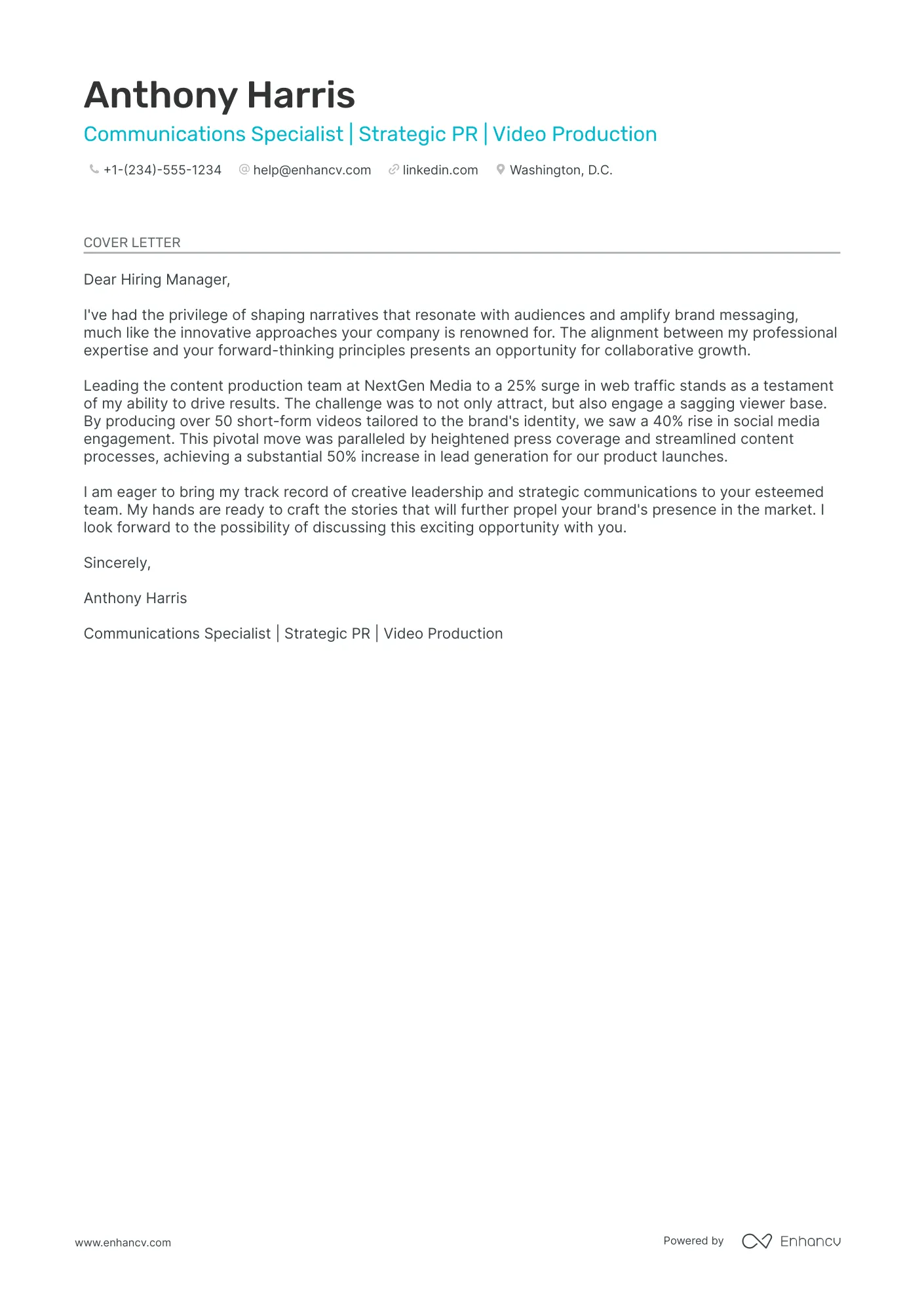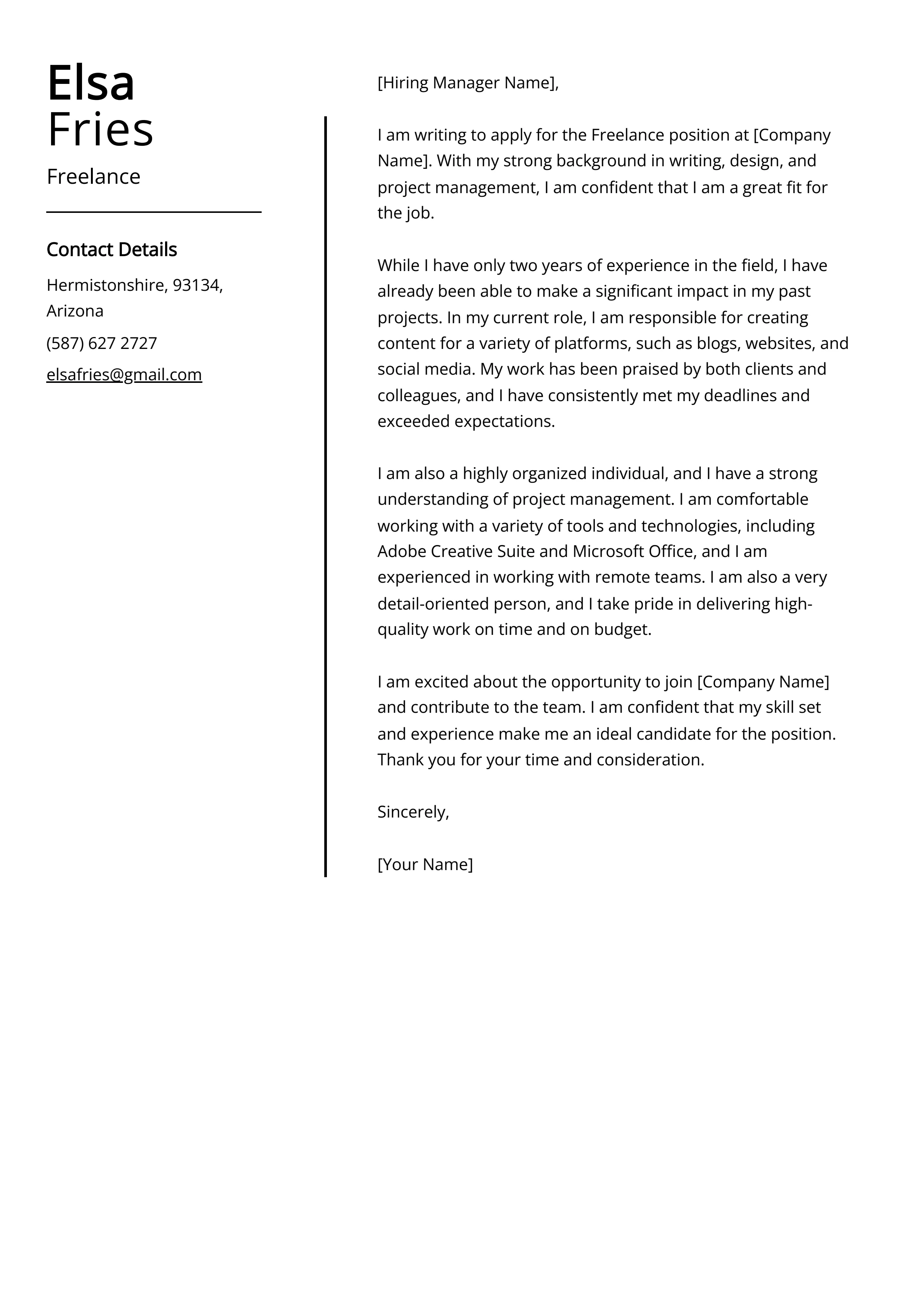Why Freelance Cover Letters Matter
In the competitive world of freelancing, a cover letter is your first impression, a crucial tool that often determines whether you’ll get the gig or not. It’s more than just a formality; it’s your chance to showcase your personality, skills, and understanding of the project. A well-crafted cover letter sets you apart from other applicants. It gives you an opportunity to make a great first impression, demonstrating your professionalism, attention to detail, and genuine interest in the project. Unlike a resume, which is a static document, a cover letter allows you to tailor your application to the specific requirements of the client. It should provide context to your resume and highlight the aspects of your experience that align with the job. Ignoring or underestimating the importance of a cover letter can significantly reduce your chances of landing a freelance project. Many clients view a cover letter as a test of your communication skills and your ability to follow instructions. If you cannot demonstrate these abilities here, it’s unlikely they will consider you for the job.
Highlighting Your Skills and Experience
When crafting your cover letter, it is essential to highlight your skills and experience. This means going beyond simply listing your qualifications. Instead, showcase how your skills and experience directly align with the client’s needs. Identify the key skills and experience the client is looking for. Then, provide specific examples from your past projects where you successfully utilized these skills. Use action verbs to describe your accomplishments and quantify your results whenever possible. For instance, instead of stating, ‘I managed social media accounts,’ write, ‘I increased follower engagement by 30% on client’s Instagram account.’ This level of detail not only demonstrates your competence but also shows that you understand the client’s needs. Make sure to tailor your response to each specific job posting, emphasizing those skills and experiences that are most relevant to the project. This targeted approach demonstrates that you have taken the time to understand the project’s requirements and increases the impact of your application. Your skills and experience should be easily identifiable throughout the cover letter.
Tailoring Your Cover Letter

Generic cover letters are easily recognized and often discarded. Tailoring your cover letter to each specific job application is a critical step in increasing your chances of success. This involves reviewing the job description carefully and identifying the key requirements, then addressing them directly in your letter. Mention the specific project or company and demonstrate that you understand their goals and needs. Show that you’ve taken the time to do your research and that you are not just sending out a blanket application. Personalize your cover letter to show you care about the project. To tailor your cover letter effectively, start by reading the job description thoroughly. Then, highlight the key skills and experiences the client is seeking and provide specific examples of how you have demonstrated these skills in the past. If possible, mention specific aspects of the project or company that you find appealing. This shows your genuine interest. Remember to use the client’s name and address your letter accordingly. This personal touch indicates that you are serious about the opportunity and have invested time in the application process.
Researching the Client and Project
Before you begin writing your cover letter, it’s important to research the client and the project. This research will not only help you tailor your cover letter but also demonstrate your initiative and understanding of the client’s needs. Start by reviewing the client’s website, social media profiles, and any other online presence. Understanding their brand, their target audience, and their goals is crucial. Look for information about the company’s mission, values, and past projects. If possible, find out who will be reviewing your application and address your cover letter to that person. For the project, carefully review the job description and any other materials provided. Identify the specific requirements, deliverables, and expectations. The more you know about the client and the project, the better equipped you will be to write a compelling cover letter. Mentioning specific details from your research will show the client that you have taken the time to understand their needs and are genuinely interested in the opportunity. This shows you’re not just looking for any job, but the specific job at hand.
Showcasing Your Personality and Voice
Your freelance cover letter isn’t just a dry recitation of your qualifications; it’s an opportunity to let your personality shine. Injecting your voice into your cover letter will make it more memorable and engaging for the client. While maintaining professionalism is crucial, don’t be afraid to let your personality show through. Use a conversational tone and avoid overly formal language. Share your enthusiasm for the project and why it aligns with your interests and skills. Use anecdotes, if appropriate, to illustrate your experience. It is your chance to present yourself as someone the client would want to work with. Your personality can significantly impact the client’s perception of you and make your application more memorable. If you feel it fits, use humor, but always keep it professional. Write in a tone that suits the job, as if you were already talking to the client. Use your cover letter to make a connection, and showcase the unique value you bring to the project.
Structuring Your Freelance Cover Letter

A well-structured cover letter is easy to read and effectively communicates your qualifications. The standard structure includes an opening paragraph, a body, and a closing. Begin with a compelling opening that immediately grabs the reader’s attention. State the position you are applying for and briefly explain why you are interested. The body should highlight your relevant skills and experience, providing specific examples and quantifiable results. Tailor this section to the requirements of the job description, and make sure you explain why you’re a great fit. The closing should summarize your interest and include a clear call to action, such as requesting an interview or follow-up. Maintain a professional tone throughout, using clear, concise language and proper grammar. Keep the letter to one page in length, making sure each section is well-organized. Using bullet points can help to break up the text and make the information easier to digest. A clear structure demonstrates professionalism, and increases the impact of your application. Your structure should be easily adaptable to any project you intend to apply.
The Opening Paragraph Tips
The opening paragraph is your first and often only chance to make a great impression. Start strong by clearly stating the position you’re applying for and where you found the listing. Then, immediately capture the reader’s attention by mentioning something specific that attracted you to the project or the client. This could be a specific detail from the job description or something you learned during your research. Briefly explain why you are the perfect fit for the role. Do not waste time with generic introductions. Instead, provide a concise overview of your key skills or experience that align with the client’s needs. Show your enthusiasm, and why you’re excited about the opportunity. Avoid clichés and focus on making a unique and memorable opening statement. The goal of your opening paragraph is to immediately grab the reader’s attention and encourage them to continue reading.
The Body Paragraphs What to Include
The body paragraphs of your cover letter should provide a deeper dive into your qualifications and experience. This section should demonstrate how your skills and experience align with the client’s needs. Use specific examples to illustrate your accomplishments and provide quantifiable results whenever possible. For each skill or experience you highlight, provide context. This is where you explain how you used your skill, what challenges you faced, and what results you achieved. Tailor the content to each job, emphasizing the skills and experiences that are most relevant to the project. Use strong action verbs to describe your accomplishments, and vary your sentence structure to keep the letter engaging. Avoid jargon and technical terms that the client might not understand. Break the content into logical sections to improve readability. The body paragraphs should convince the client that you have the right skills, and the track record to deliver on the project’s objectives.
Quantifying Your Accomplishments

Numbers can make your cover letter much more convincing. Instead of simply stating you possess certain skills or have experience in a particular area, quantify your accomplishments whenever possible. Use specific data to illustrate your success. Instead of saying ‘I improved website traffic’, you can say ‘I increased website traffic by 40% in six months.’ These results make your claims much more tangible and help clients understand the value you can bring to their project. Quantifying your accomplishments demonstrates that you are results-oriented and can deliver measurable outcomes. In your cover letter, include metrics such as percentage increases, dollar amounts, or the number of projects completed. Always provide the context for your numbers, explaining the situation, the actions you took, and the impact of your work. If you are applying for a marketing position, showcase how you increased the client’s leads. Your results are what will grab the attention of the client.
The Closing Paragraph Call to Action
The closing paragraph is your final opportunity to make an impression and encourage the client to take action. After summarizing your interest in the project, include a clear call to action. This could be requesting an interview, offering to provide additional information, or simply expressing your eagerness to discuss the project further. Thank the client for their time and consideration, and reiterate your contact information, so they can easily reach you. Avoid generic or passive closings. Be proactive, and show the client that you are eager to get started. Keep the tone professional and enthusiastic. Consider mentioning your availability for the interview. Your call to action should make it as easy as possible for the client to take the next step.
Proofreading and Editing Your Letter
Before submitting your cover letter, take the time to proofread and edit it carefully. Your cover letter represents your attention to detail and professionalism. Therefore, it should be free of errors. Check for any grammatical, spelling, and punctuation errors. Read the letter aloud to catch any awkward phrasing or inconsistencies. Ask a friend or colleague to review your letter for you. A fresh pair of eyes can often spot errors that you might have missed. Ensure that your contact information is correct and up to date. Verify that all links are working correctly. Ensure your cover letter is formatted professionally, using a readable font and consistent margins. After you are certain that the letter is perfect, then you should submit your application. Proofreading and editing may seem like a small step, but it significantly increases your chances of making a strong impression.
